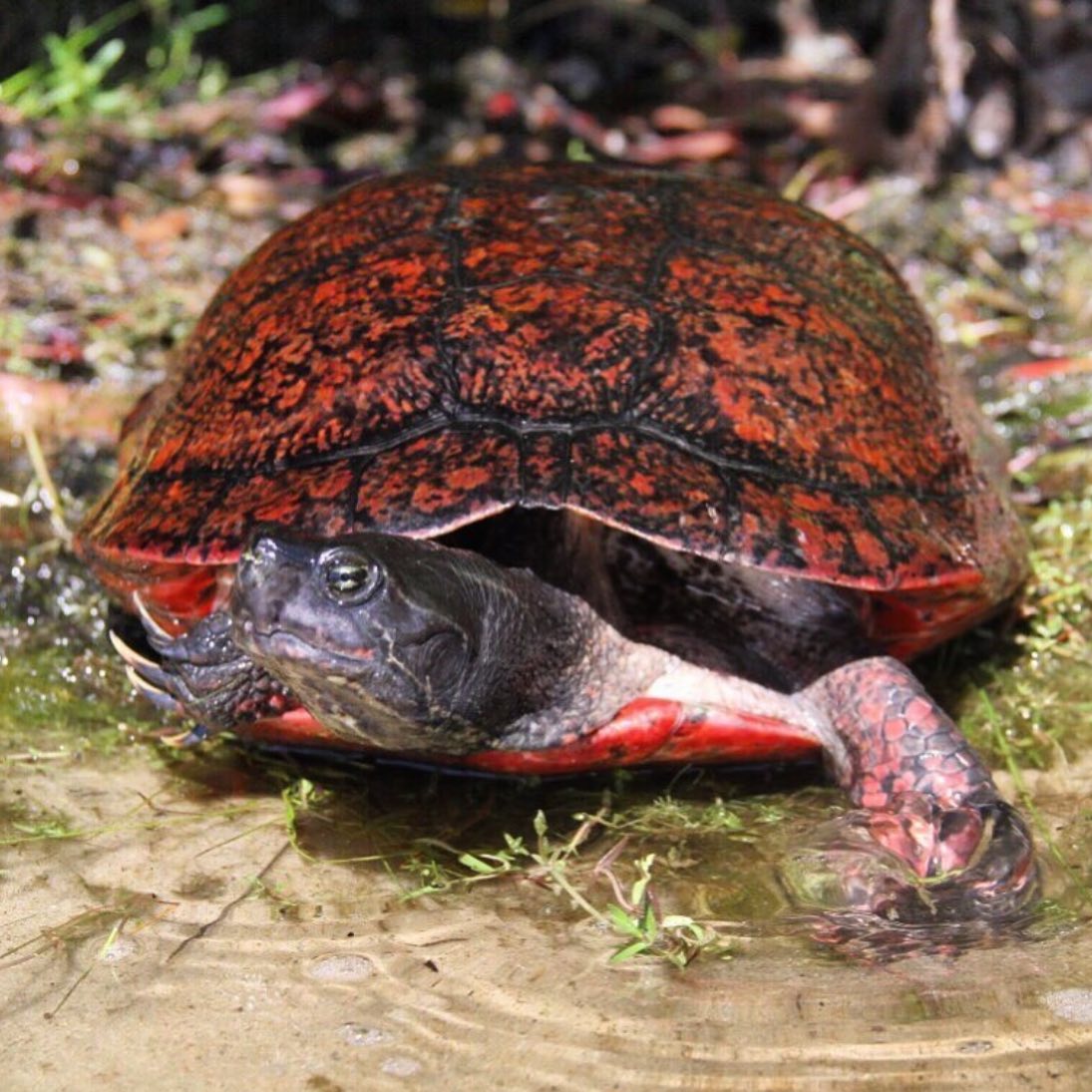– Discover the vibrant and colorful world of the Red Belly Turtle, a charming inhabitant of the United States East Coast.
– Explore the diverse and intriguing diet of this omnivorous turtle, which includes a variety of aquatic and terrestrial delicacies.
– Learn about the environmental significance of the Red Belly Turtle and its role in local ecosystems.
– Understand the importance of conservation efforts for maintaining the populations of this unique shelled species.
– Get inspired by the Red Belly Turtle’s adaptability and resilience in different habitats and practical tips for respectfully observing these creatures in the wild.
Welcome to the fascinating journey through the life and times of one of nature’s most understated yet captivating creatures: the Red Belly Turtle, locally known also as the Northern Red-bellied Cooter or by its scientific moniker, *Pseudemys rubiventris*. Sporting a carapace that can only be described as a masterpiece of nature’s design, this turtle is a visual treat and a testament to the intricate tapestry of the ecosystem it inhabits.
Imagine strolling along a serene waterway in the eastern expanse of the United States, perhaps somewhere amid the verdant landscapes of New Jersey or Virginia, only to glimpse this shelled beauty basking in the gentle sun. There’s something about how the sunlight glistens off their polished domes that can compel even the most hurried passersby to pause and admire.
The Red Belly Turtle, as its common name suggests, features a distinct reddish or orangish ventral surface. This is not merely for show; their colorful plastron plays a role in their interactions and hierarchy within their aquatic communities. It’s almost akin to wearing their badge of identity – one they carry with pride throughout their long lives.
Beyond aesthetics, their dietary preferences are just as interesting. Omnivorous by nature, these turtles are not picky eaters. Delving into delicacies from the botanical to the zoological, they sample nature’s offerings. From the crunch of a snail’s shell to the soft texture of an algae bloom, their palate is as varied as voracious. They’re also keen on aerating the marshy floors they call home by their quest for worms, crayfish, and insect larvae.
Playing a role as both predator and prey in their habitats, Red Belly Turtles serve as a vital link within the food chain. Consumers of various organisms help maintain a balance within their environments. And lest we forget, by becoming dinner for raccoons, foxes, and birds of prey, they inadvertently contribute to the sustenance of other wildlife – a noble, if unwilling, sacrifice.
As we delve deeper into their existence, we can’t help but be impressed by the longevity of these hardy creatures. With a potential lifespan similar to that of humans, with some surpassing the fifty-year mark, these turtles are great indicators of ecological health. Their presence reflects the cleanliness of the water and the availability of resources within their natural habitats.
However, despite their beauty and importance, these creatures face challenges that strike at the very core of their survival. Fragmented habitats and pollution are insidious threats in the waters and landscapes they inhabit. With the ever-encroaching spread of urbanization, the Red Belly Turtle’s world is shrinking, and protecting their habitats has become a clarion call for conservationists far and wide.
This brings us to the delicate dance of conservation. Efforts to safeguard this species are multifaceted, from legal protections to habitat restoration, public education, and research. Every step taken towards ensuring a future for the Red Belly Turtle is a step towards maintaining the delicate balance of environments that many creatures, including humans, depend on.
As nature enthusiasts, we bear an inherent responsibility. Our fascination must be coupled with respect and care for their habitats. For instance, watching them in the wild offers a charm unlike any other, but it should be done at a distance – love from afar. The excitement of spotting these turtles in their natural abodes should inspire us to tread lightly to avoid trampling the vegetation along the banks that serve as their crucial nesting sites.
Let’s not forget the captivation that comes with witnessing their seasonal forays during the breeding season. The once-solitary Red Belly Turtles converge and partake in what can only be described as a nuptial dance upon the currents. For the patient observer, these moments provide an awe-inspiring spectacle and a reminder of the ongoing cycle of life that these resilient creatures are part of.
In conclusion, if the Red Belly Turtle’s story teaches us something, it’s about the interconnections of life, the ripple effects of our actions, and the undeniable charm and beauty of the natural world. These turtles, with their stoic expressions and vivid hues, are more than just passive dwellers of the waters – they are active participants and contributors to the vitality of nature’s grand narrative.
Through committed conservation, responsible observation, and an overall enhancement in our understanding of these creatures, we can ensure that the Red Belly Turtle continues to glide through our nation’s waterways. May the soft ripple of their movement in the water continue to inspire us, reminding us of the wild’s serenity, resilience, and raw, untamed beauty. They are, after all, not just spectacles for our enjoyment but integral figures in the complex mosaic of life on Earth. So, the next time you find yourself by a marshy bank, take a moment to seek out the Red Belly Turtle and reflect on our shared world’s beauty, complexity, and interconnectedness.
*****
Source Description
This beautiful Red Belly Turtle (Pseudemys rubiventris) is sporting her best Christmas look! This species is found on the east coast of the United States and is an omnivore that feeds on snails, plants, worms, tadpoles, crayfish, and insect larvae.


